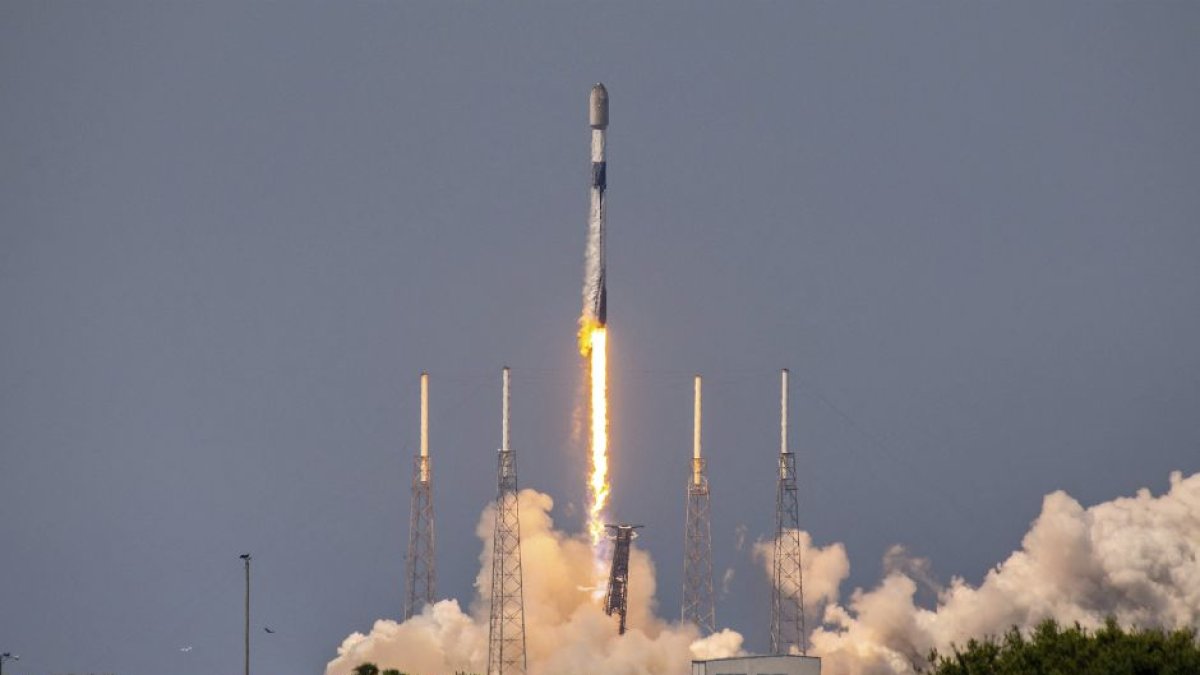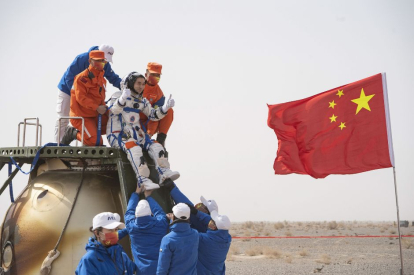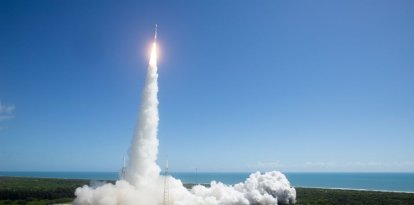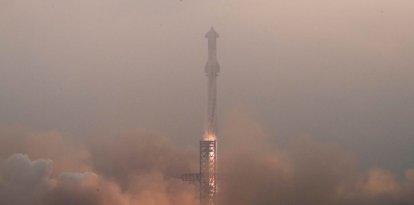Space race: China set to battle U.S. for space dominance
Despite American dominance in space, experts warn that China could become the world's preeminent space power in the next decade.

(Cordon Press)
"The sky was the blackest black," Yuri Gagarin wrote in a secret report after becoming the first man to travel into space. "A very beautiful horizon was visible, as was the roundness of the Earth." That flight was one of the first milestones of the Space Age, which extends even until the present day.
From then to now, however, space exploration has changed dramatically. Although the Soviet Union took the lead at the beginning, the United States later managed to surpass it and become Earth's principal actor in space. In recent times, U.S. experts, including those at the Pentagon, have been alarmed by the rise of a major player: the People's Republic of China. Who is leading the new space race, what does the Chinese Communist Party intend to do with this new challenge to Washington?

Astronaut Ye Guangfu exits the return capsule of the Shenzhou-13 spacecraft at the Dongfeng landing site in north China's Inner Mongolia autonomous region, April 16, 2022. Three Chinese astronauts, the second team sent into orbit to build the space station, have completed their six-month mission and returned safely to Earth on Saturday. / press action
Astronaut Ye Guangfu exits the return capsule of the Shenzhou-13 spacecraft in northern China, April 16, 2022 / (Cordon Press)
Investment
The U.S. government spends the most on space programs. It was responsible for 60% of global spending in this domain in 2022, according to a report from the space consulting firm Euroconsult.
"However, its share of global spending has been reduced, from 76% in 2000 to 60% in 2022," notes the report. It explains that the decrease is due to the fact that more countries are now getting involved in the space sector: 86 allocated funds to space last year.
What about China? Every year, it has been increasing its investment, reaching $12 billion by 2022. This figure, however, represents only 10% of global spending.
Allies
"Today, the nature of space power is multi-faceted and net-centric, premised on the increasing role of the commercial sector and military space alliances," Dimitrios Stroikos analyzes in "Power Transition in the Anarchical Society."
China follows a model similar to that of the Cold War, in which the state was the main promoter of space efforts, explains the researcher from the London School of Economics and Political Science (LSE). The United States, on the other hand, benefits from collaborating with private companies, such as SpaceX, as well as multiple other countries. Astronauts from more than 20 nations visited the International Space Station (ISS). A similar number of countries signed the Artemis Accords, a set of principles for space exploration. The United States promoted both initiatives, while China is not involved in either.
Artemis Accords Signed 13Oc... by Santiago Adolfo Ospital
"China also has allies that help with space – most notably Russia and members of the Asia-Pacific Space Cooperation Organization, including Iran, Pakistan, Thailand and Turkey," clarifies Assistant Professor of Space and International Relations Svetla Ben-Itzhak in an article.
They are less cooperative. And also have less developed space technology, Ben-Itzhak points out. As an example of the difficulties faced by the Asian country on the partnership front, the professor cites the example of the International Lunar Research Station (ILRS):
Satellites
On Oct. 4, 1957, a sphere the size of a basketball orbited the Earth for about an hour. Sputnik 1, Russian for "traveling companion," was the first artificial satellite in history. It was a Soviet achievement that set off alarm bells in the Eisenhower administration, more for its psychological effect on the population than its technical demonstration, according to internal documents.
In 60 years, the counter of "traveling companions" in space went from one, the lone Sputnik 1, to more than 5,000. There is no unified registry of all operational satellites, and their detection is complex (one need only recall the Chinese spy balloon). In addition, there are multiple countries and private institutions that have mastered this technology. Launches, dismantling and abandonment are constant.
According to an open-access database from the Union of Concerned Scientists (UCS), the United States has 3,433 satellites compared to China's 541. The U.S. actually surpasses all other nations combined in this regard, totaling 1,491 satellites.
In other words: 60% of the world's active satellites belong to the United States. China, on the other hand, is not even in second place. The United Kingdom exceeds it by 22 satellites, if data from the open-source N2yo are considered.
From allowing internet users to read this very article to detecting volcanic eruptions before they occur, satellites have multiple functions. American satellites serve mainly commercial purposes (2,922 according to the UCS). The next leading purposes are military (237), government (172) and civilian (31).
However, when talking about space, there is a fundamental word: ambiguity. "Most (space) technologies, and most platforms in space, have dual-use potential," explains Mark Hilborne of the LAU China Institute Policy. The expert explains the same satellites used to detect environmental changes can also be used to identify and monitor military targets.
'The Long March to Space'
China sent its first astronaut into space 40 years after the USSR and the United States. In 2019, it became the first country to land on the "dark side" of the moon. Three years later, it sent its own space station into orbit, linking it to the International Space Station, making it the only nation to operate such a facility on its own.
"China’s space industry plans for China to become the world’s leading space power," explains the China Aerospace Studies Institute (CASI). By 2030, they intend to overtake Russia, and, by 2045, the United States.
U.S. experts see this as possible. China's "space dream," as Xi Jinping dubbed these efforts, could even be fulfilled in the next decade, according to testimonies gathered from the State of the Space Industrial Base report from 2022.
This success will be due in large part, they argue, to China's ability to focus the entire nation on a single long-term goal. "The U.S. lacks a clear and cohesive long term vision, a grand strategy for space that sustains economic, technological, environmental, social and military (defense) leadership for the next half century and beyond," wrote the General John M. Olson of the U.S. Space Force, among other authors. He also added that the U.S. must:
But why does China dream of the stars? "China’s space program since its inception in the 1950s has been focused on protecting China’s national security," The China Aerospace Studies Institute argues. "Space is characterized as an essential component of modern warfare that plays a role in meeting many of its national security needs."
However, China publicly downplays the military significance of these efforts. It tries to position itself as the great peacemaker in the face of a "malevolent" North America. This is according to CASI experts, who say that China maintains that:
One example of these efforts is the Chinese space station, Tiangong. Its social media accounts show that, in addition to its research functions, the communist regime takes advantage of the satellite to display it as an example of its technical capacity and humanitarian mission.
























